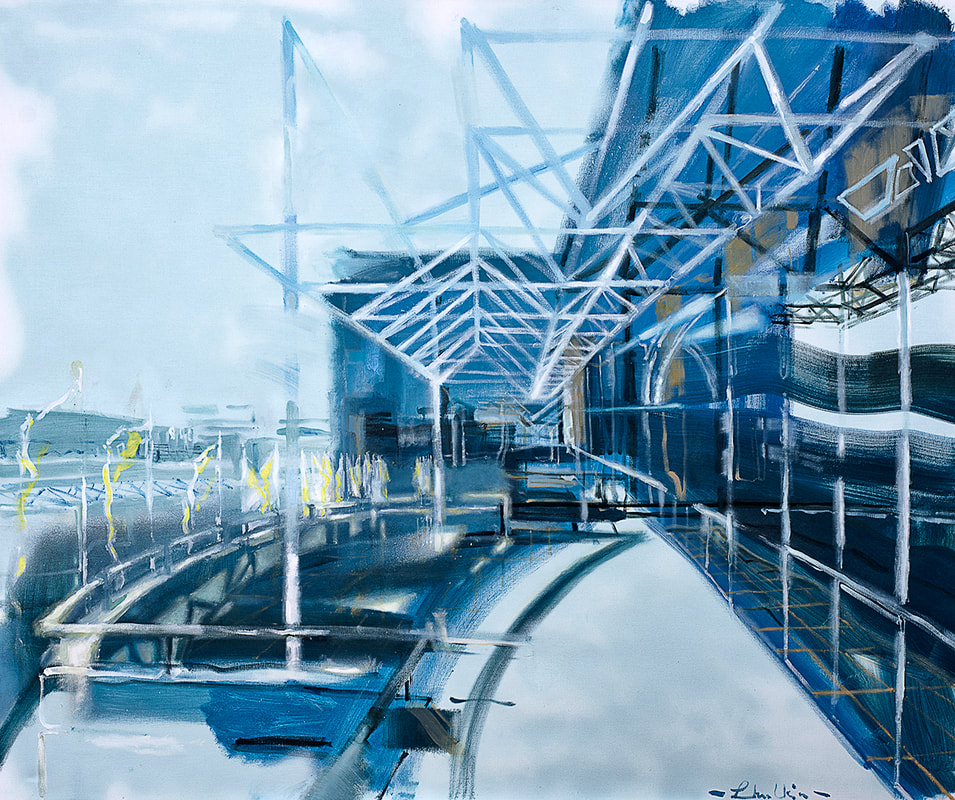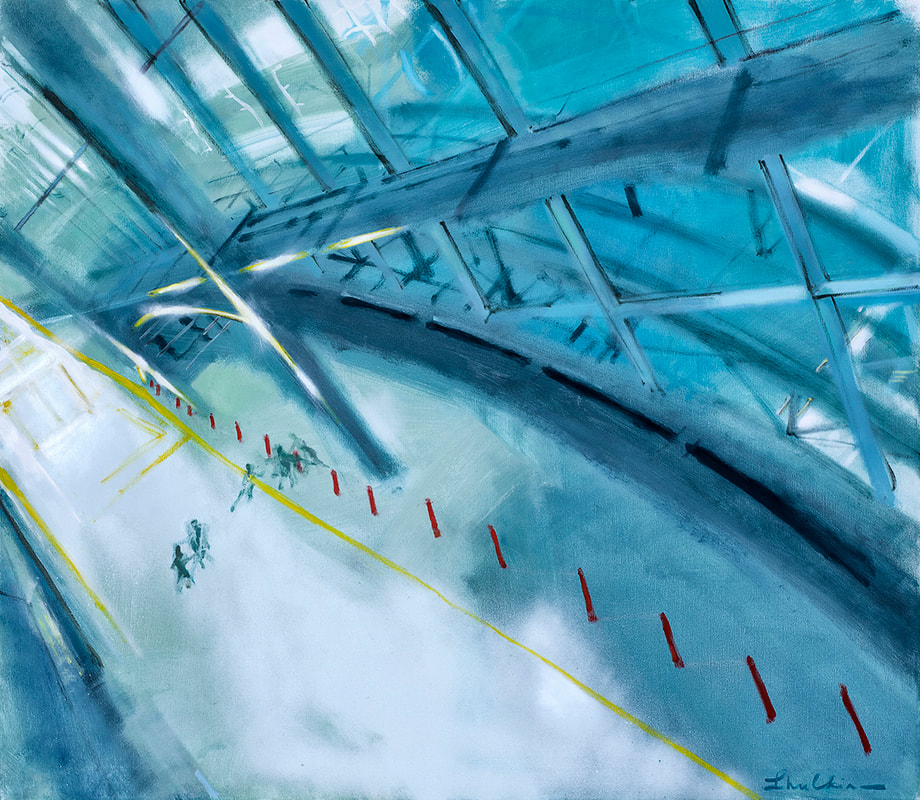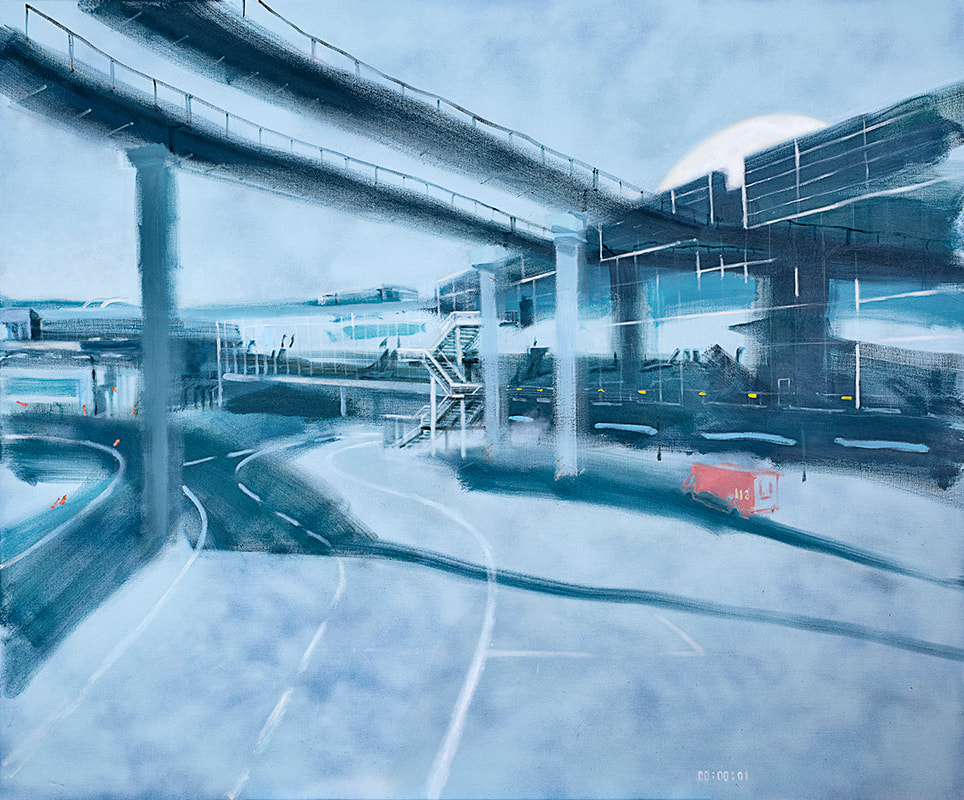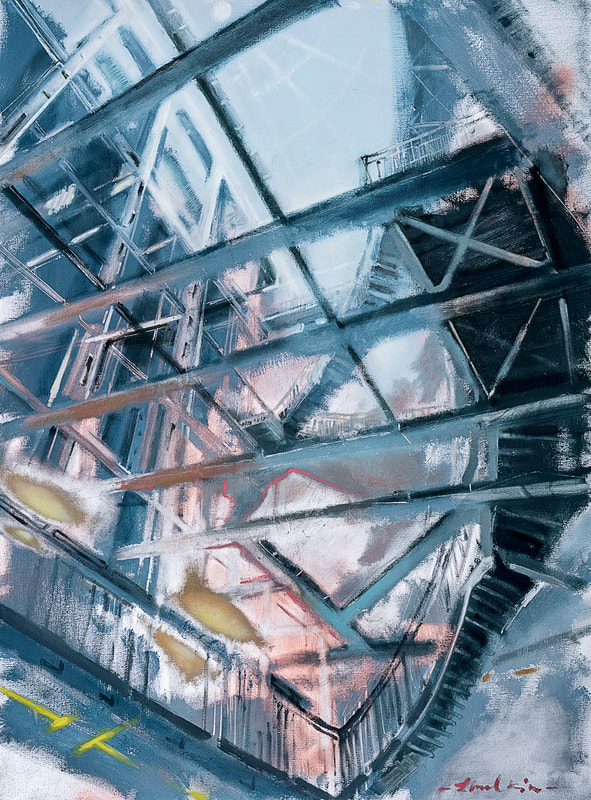Belarusian artist Helen Shulkin upon Post-urbanity, revealing new strata of recent sociological, cultural and technological developments.HELEN SHULKIN & CARMEN HUST | ARTICULATE #15 | APRIL 2018
To Belarusian artist Helen Shulkin (b.1978) technological evolution has changed urban objects. Many urban spaces have lost their previous function like postindustrial areas and many urban objects are influenced by a postmodernism and should be therefore be defined as post-urban spaces and objects. Post urbanity reveals new strata of recent sociological, cultural and technological developments. Some of its architectural identities deepened into the style of neo-futurism and some into the structural expressionism like high-tech architecture. But together they can be included into the post urbanity definition.
These changes force many street and urban artists to find new ways of expression because many postmodern buildings have no conventional walls. But the most important question is how the post urban processes in the modern city can be interpreted by an artist who is working with traditional media?
|
In my post urbanity project, I try to find which objects represent the conflict between old and new, which urban spaces are most susceptible to change, what are the prevalent portrayals of post objects, how are those transformations perceived in human awareness, and which technological structures maintain their entity.
To answer these questions, I visit contemporary cities looking for locations of deep transformations in terms of architectural structuring. Thereby I try to find new methods to interpret post urbanity where complex constructions of immense, larger than human-size dimensions evolve into quasi-ethereal structures. Brutalist, high-tech, post-modern and post-industrial constructions are explored through my individual aesthesis and developed in a minimalistic way where a state of pure feeling is characterized by the minimum of interpretational elements. |
Aesthesis is a fundamental metaphor in describing of the process of my own interpretation of post urbanity. Aesthesis is a particular way of seeing (Rush, 1997) and refers to a science of things that can only be known through my sensory perception as a creative activity. In this case my works represent a new mode of experience covering both perception and sensation of post urbanity. This results in the fact that the post objects and -spaces come to life ensouled by my hypostasis. They start to breathe, become weightless, acquire individuality and involve in the synthesis with the audience. Finally, post urbanity becomes a new form of existence.
This article about Helen Shulkin takes part of magazine, ARTICULATE #15. Read, download or order your print version of the full publication below
|
SUPPORTARTICULATE
www.articulate.nu SUPPORT Monday - Friday 8:00 - 16:00 [email protected] +45 30 48 19 81 Head Quarters VAT DK40953191 |
|







